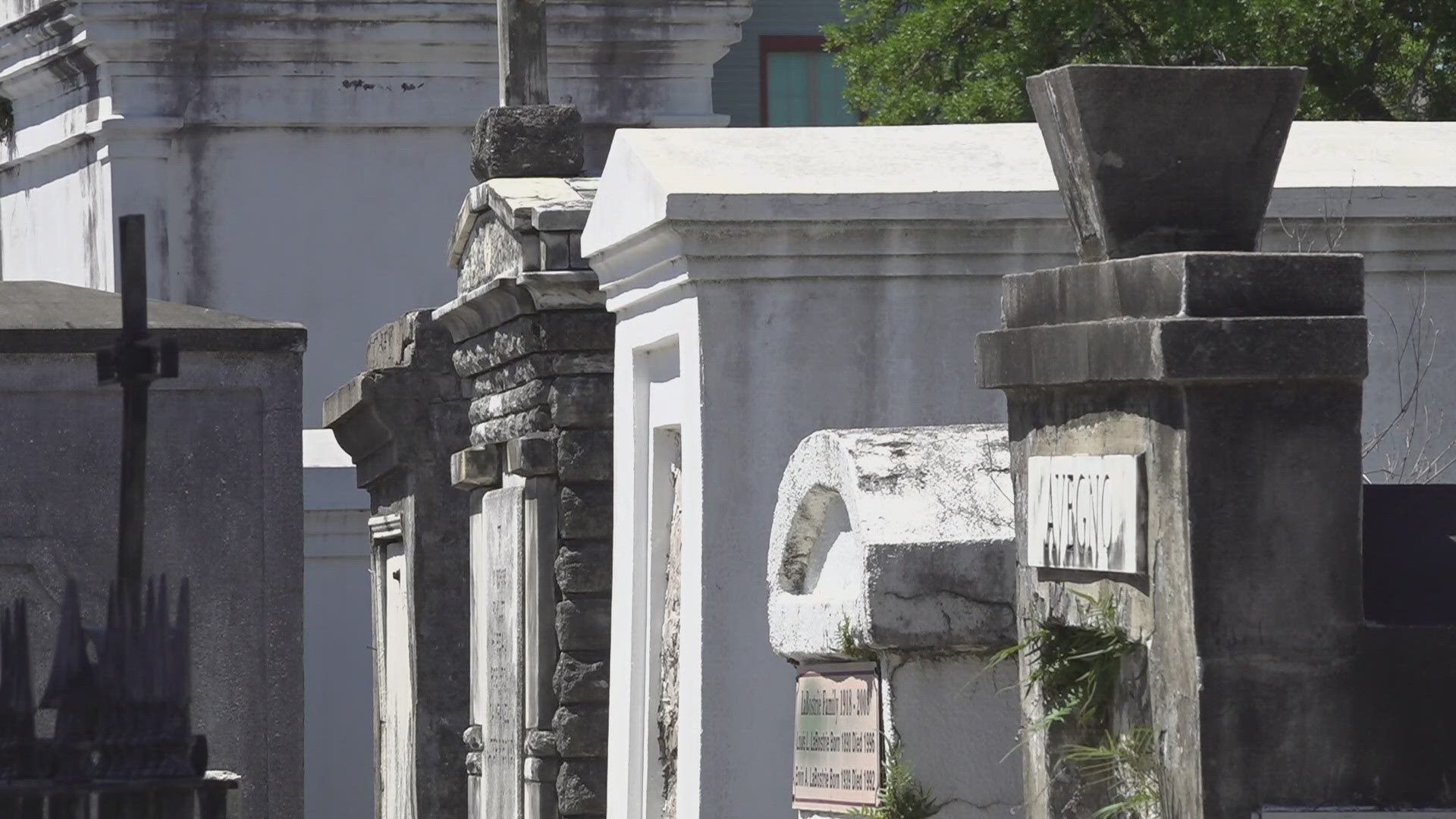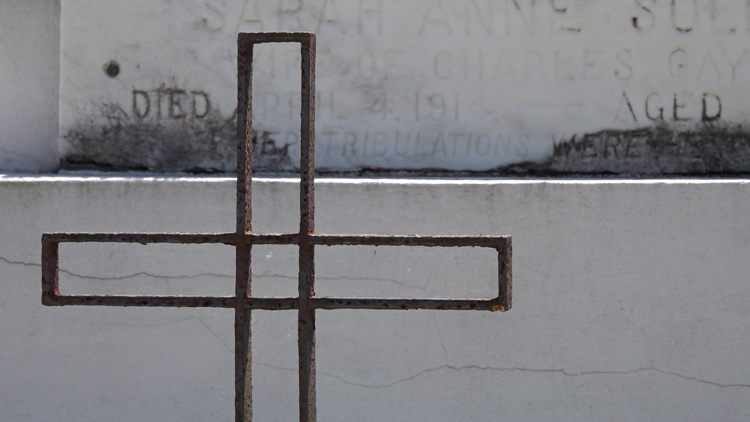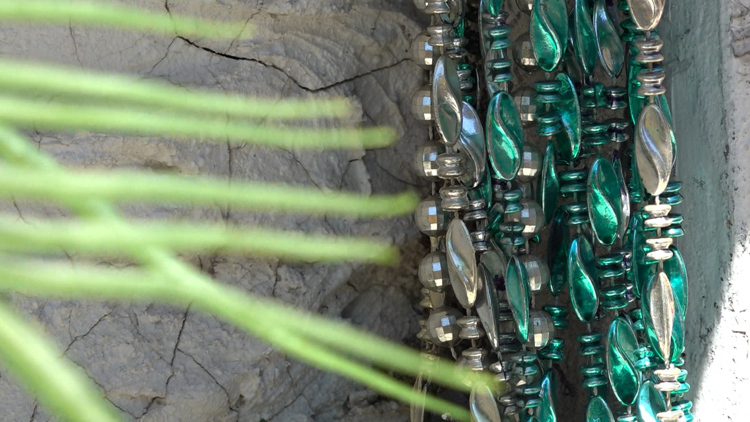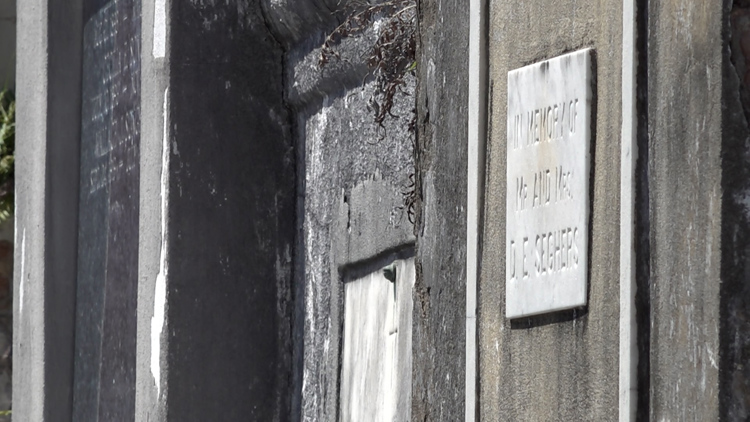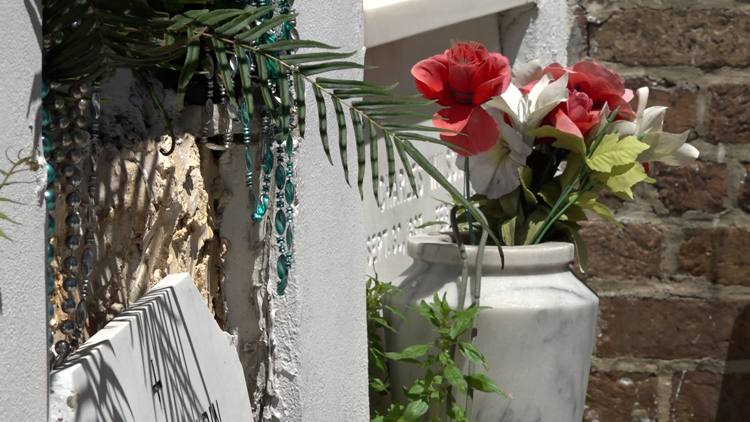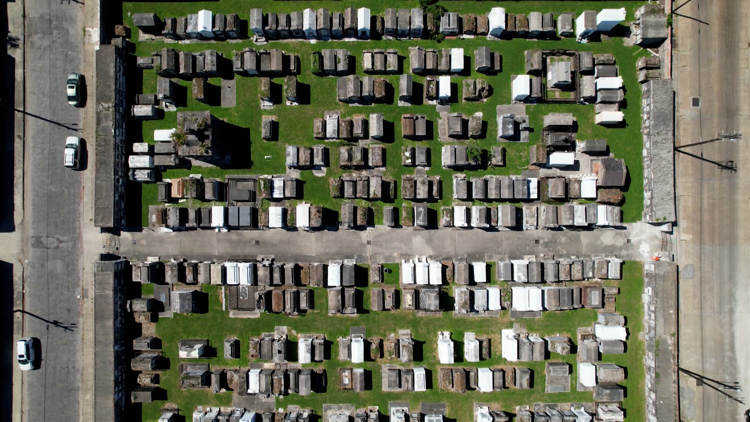NEW ORLEANS — Hauntingly beautiful and often misunderstood, New Orleans’ historic cemeteries have mesmerized generations of people. Even with all the stories, art, and legends that have come from them, they still hold many stories waiting to be told.
One is personal for former tour guide Mary Dugas. Her great-great-great-grandfather is buried in St. Louis Cemetery No. 1. She has searched and, so far, has not found his tomb. “I could get lucky, we find new information all the time,” she said.
Established in 1789, St. Louis No. 1 is the oldest surviving cemetery in New Orleans. No. 2 and No. 3 were built later, each about 30 years after the previous one. New Orleans Historic Collection Family Historian Jari Honora explained that back in the 1700s and 1800s, there was a pattern to where people buried their dead.
“The thought then was that cemeteries should be placed on the outskirts of cities, for sanitary reasons,” he said. That means the location of St. Louis 1, 2, and 3 can actually show the growth of the city over time. They move in order away from the river, where the city first began.
Step a little farther back and you can learn another lesson about the people who first colonized what would later become New Orleans.
*Read more below the photo

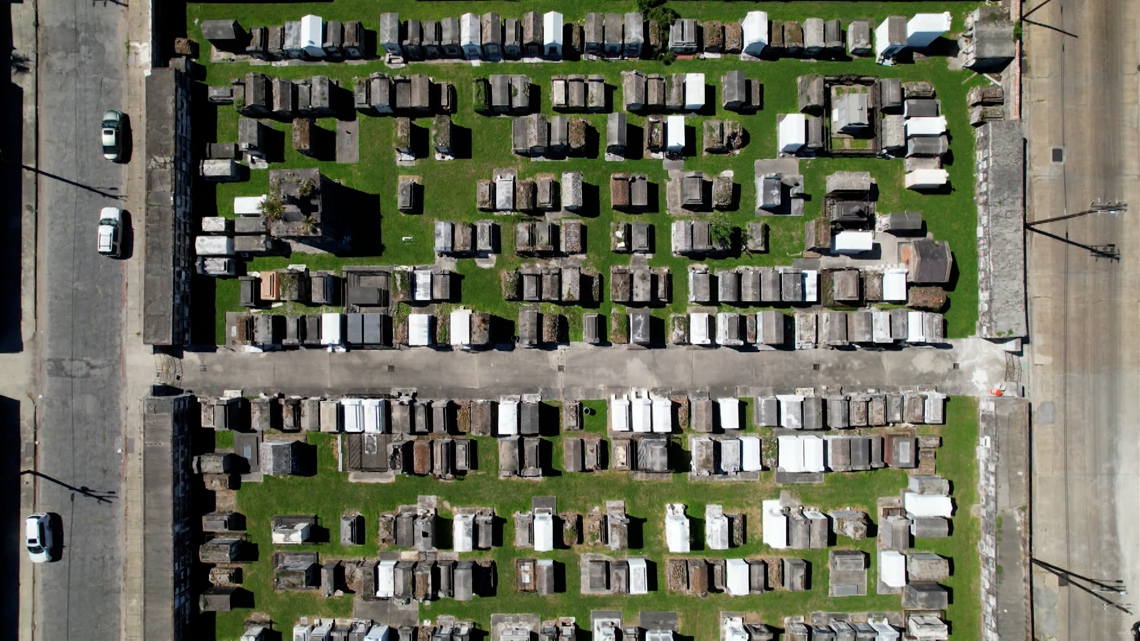
The very first cemetery founded in the city, even older than St. Louis No. 1, was the St. Peter Street cemetery. It was located in what is now the block of the French Quarter between Toulouse, Burgundy, St. Peter, and North Rampart Streets. When the city expanded beyond its former ramparts, the cemetery was deconsecrated and the bodies were moved to other sites. Most of them, anyway.
At least twice, property developers have found caskets underneath that block. In 2011, the remains of 15 people were removed and re-interred at St. Louis No. 1.
It reflects a modern reverence for gravesites that was not always the norm. Cemeteries are now an essential part of the image of itself New Orleans sells to the world. “I think that we understand the value of having cemeteries in place as artifacts of their time,” said Honora, “as our, essentially, outdoor history classrooms.” In centuries past, “individual record keeping, individual grave marking, I don't think that there was as much of a priority placed on that.”
In fact, the developers of a death-themed tourist attraction next to St. Louis No. 1 paused work earlier this year after the state raised concerns about actual human remains buried on the property. They were left over from a time when the cemetery was bigger. In the 1800’s, it was trimmed down, and not all of the bodies were moved.
Even within the last century, though, the city has moved remains to make room for more development. In 1957, the Girod Street Cemetery was moved after decades of neglect. Legend has it that the Superdome was built on top and the ghosts of those buried there cursed the Saints into their long post-season drought.
The cemetery, however, was actually on the site of what is now a Superdome parking garage. And what happened when it was moved holds an uncomfortable truth about the legacy of segregation in New Orleans.
Most of the remains interred at Girod Street were claimed by family members. For those that weren’t, what happened to them was decided by their race. “Reflecting the times,” said Honora, “the unclaimed black burials were reinterred in a mass grave in Providence Park out on Airline Highway, and the unclaimed white burials were interred together in Hope Mausoleum on Canal Street.”
*Read more below the photo


Currently, there is still a plaque on the wall at Hope Mausoleum marking the grave of the unclaimed white New Orleanians moved from Girod Street. Some of their headstones were saved as well.
At Providence Park, there is only a single plaque in the ground to mark the grave of the unclaimed Black New Orleanians. One name was recorded– Minnie Carter– with no birth or death year. It demonstrates how, with less importance placed on the lives of people of color throughout New Orleans' history, some families are left with bigger mysteries than others.
As Mary Dugas works on solving her own family’s mystery, she has made sure the resting places of her immediate relatives are easier to find than those of her great-great-great-grandfather. Years ago, she had a tomb built at St. Louis No. 1, which still accepts a small number of new burials. Her parents and older brother are interred there.
It has its drawbacks. “I can't tell you how many times I've caught tour guides in front of my tomb, just making stuff up,” said Dugas, “like, oh yeah, they did voodoo ceremonies here,”
But she believes that, because of the cemetery’s modern value to the city, it is less likely her family’s remains will end up moved as so many others have been. She hopes they – and herself, someday – will rest undisturbed, a permanent part of New Orleans’ story.
Stories of New Orleans' past
► Get breaking news from your neighborhood delivered directly to you by downloading the new FREE WWL-TV News app now in the IOS App Store or Google Play.

